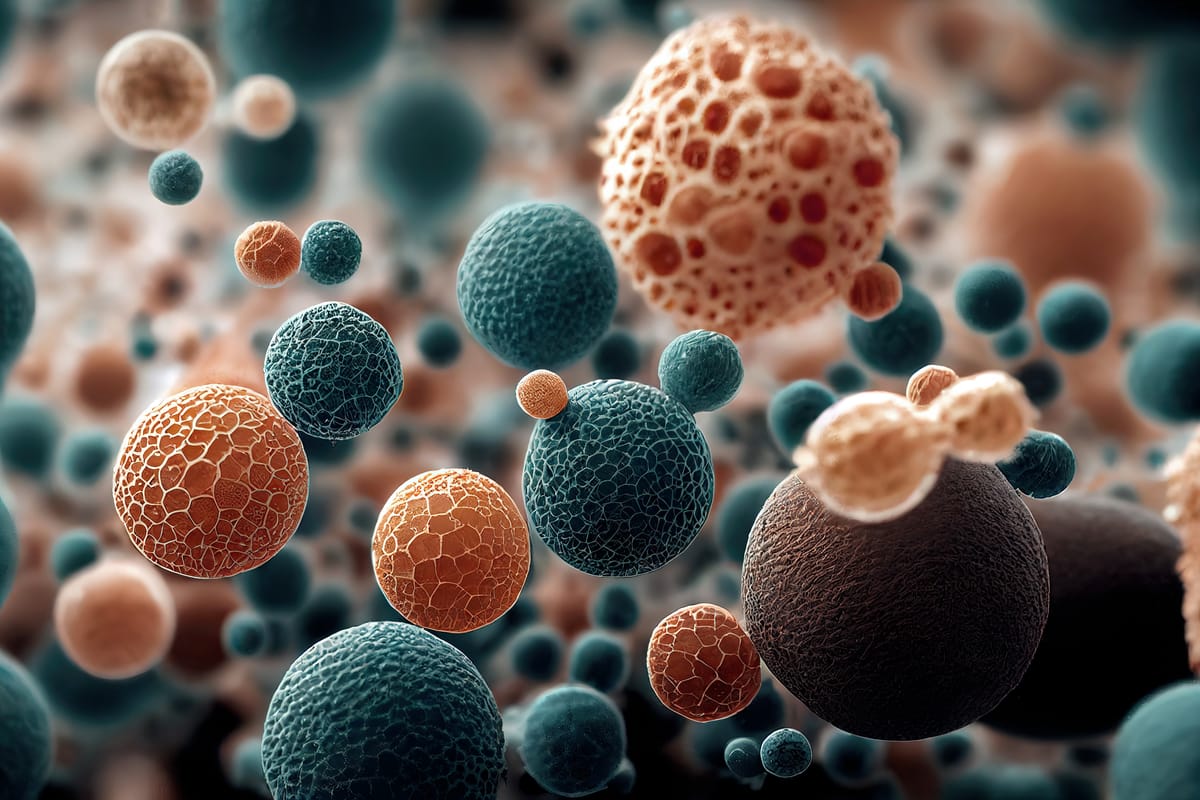Nanoparticles: the future of animal supplements?

The high-points:
- Lactic acid bacteria improve both rumen fermentation and silage quality in the cattle industry.
- Tested delivery of bacteria to the large intestine by using a technology called nanofiber microcapsules that surround the bacteria.
- The nanofiber coating protected the product from being released into ruminal fluid but did not affect the large intestine due to over or under-encapsulation.
What you need to know: Lactic acid bacteria (LAB) improve both rumen fermentation and silage quality in the cattle industry (see the previous R2R for more on these bacteria). The large intestine benefits of LAB supplementation have been demonstrated only in the pre-ruminant calves. The large intestine of calves supplemented LAB show decreased inflammation and improvement of the microbiome population, with more beneficial bacteria and less harmful ones. However, supplementing LAB to improve the large intestine microbiome is complex in an adult ruminant. The many ruminant stomachs can interact with the bacteria, impacting their ability to travel to and be beneficial in the large intestine.
This research tested if LAB could travel to the large intestine successfully using a technology called nanofiber microcapsules. This coating surrounds the bacteria and protects them from the digestive system environment, potentially allowing the particles to stay intact until they enter the large intestine, where the bacteria are to be released.
Researchers compared the ability of these encapsulated bacteria (ELAN) to non-encapsulated bacteria (LANP), both in the ability of the capsules to stay intact in the rumen (simulated rumen via in-vitro fermentation), as well as the ability of both products to make it to the large intestine intact after traveling through the digestive tract of cattle.
The coated ELAN capsules had little effect on gas production or insoluble fraction of the rumen fluid (in-vitro). These two measures, gas production and insoluble fraction, can assess how much fermentation is occurring and if the encapsulated LAB bacteria hindered or helped it (the goal was to see no change, as that means the capsules did their job). These results suggest that the nanofiber coating protected the product from being released into the fluid.
However, ELAN did elevate the pH and decreased lactic acid production while simultaneously lowering the quantity of microbial cell protein and ammonia-nitrogen. Increased pH is the opposite effect that the encapsulated bacteria would have, and so this change is likely due to a bacteriostatic effect (inhibiting bacterial growth) of the capsule coating, chitosan.
Finally, there was no significant difference in the LAB community in animals' large intestines supplemented with the encapsulated ELAN when tested in cows. This suggests the encapsulated ELAN were either; too well protected and not released, or not protected enough and released too early.
Important to note:
- In-vitro fermentation is a widespread method of test supplements and their effects on the rumen environment, as well as the environment on the supplement. There are, however, inherent weaknesses of using this model due to it not being a living animal.
Industry application: This research offers novel findings into a potentially valuable method for supplement delivery. With it being a new method in the cattle industry, there are some unknowns for designing encapsulation technology products. The technique was able to protect the product from the rumen environment successfully and, with further research, could be a valuable technique for product delivery into the large intestine.
Read more about it:
